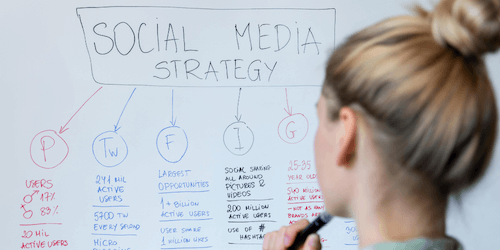
Spare change for change: How to reach younger donors
The radio silence you get back from younger generations, specifically members of the Gen Y and Gen Z cohorts, may feel personal. But if it helps at all, recent studies suggest it isn’t because of a lack of care about you or your cause.
Your mission is critical. And engaging, building, and leveraging the resources, talent, and energy of Gen Zers and Millennials is going to be essential in securing a better future for your organization and the world you serve.
We’re going to dive head first into the major reasons younger donors aren’t meeting expectations. Then we’ll switch gears to offer solutions for tackling these obstacles head on.
The bad news first…
So why does it feel a lot like those young whippersnappers just don’t care?
It all boils down to two reasons. One: trust is hard earned for these cohorts, especially from institutions and organizations. And two: they don’t exactly know the term “discretionary spending” (ok, they know the term, but they don’t have it). For Gen Zers, this is likely reason number one.
Between 2010 and 2013, the Millennial Impact Report condensed their research into these three simple takeaways:
- “Millennials make philanthropic decisions based on personal, not digital, connections.”
- “Trust is of the utmost importance in millennial giving decisions.”
- “Millennials prioritize issues and people over institutions.”
At the heart of all three is the idea of trust. Millennials — and for that matter people in general — want to engage with other people. They don’t want to feel like a cog in a machine or like some fundraiser’s hundredth ask of the day.
As for the second reason, a recent study released by Zillow and Streeteasy concluded that while rent increased across the United States by 30.4%, wage growth over the same period was 20.2%. That’s a 10.2% difference! Some Millennials have secured a mortgage, albeit at a higher price, but they’ve done this often with student loans in tow, and that’s not to mention general inflation.
As a member of the Millennial cohort myself, I find the “doom and gloom” narrative tiresome too. But if we pretend like these factors aren’t impacting the way these cohorts relate to institutions, corporations, nonprofit organizations, and everyone else, then we’re missing the lesson.
5 tactics to secure trust and increase fundraising
It’s time to tackle these issues head on. No more doom and gloom. The world needs nonprofits like yours to recruit the talent, energy, and yes — funding — of Gen Zers and Millennials because the work you do matters and needs to gain steam.
Here are five ways for your nonprofit to respond today to the generosity crisis we’re facing:
1. Start small
We all know Rome wasn’t built in a day, but we would still prefer these younger donors to start out as major givers. Continue to plant seeds with Zoomers and Millennials and expect to see the payoff in five to ten years instead of five to ten months. And don’t forget to keep watering those young plants.
This speaks to the reality that relationships take a lot of work, but they’re well worth the effort. And the quickest way to stunt the development of a relationship is to burden it with big expectations related to money from day one. Zoomers and Millennials should be giving to your organization. But would you if you were in their shoes?
Give younger generations a chance to donate a little, give them a big thank you, and keep in contact. You’ll convince these mistrustful youngsters that your organization — or really the fundraiser who picks up the phone and calls them — is worth their time and energy.
2. Tell it like it is
To gain trust, you’ve got to speak the truth. Younger generations are highly sensitive to anything they find inauthentic. They need to know exactly where the money is going and they need to know who it’s impacting.
Us marketers would like to think that it’s simply about finding the right turn of phrase. And finding the right words won’t hurt your cause, but they have to work together to tell a unified story. Of the two, Zoomers especially value authenticity, so if it feels like “professional” speak, then they’ll simply swipe left (or is it right? I’m not a Zoomer, but you get the point — they’ll move on).
3. Take it online
Even if relationships need to be fostered outside of digital channels, building personalized donor experiences through the entirety of the journey is essential for members of these tech-savvy generations. They are simply used to having an easy time conducting research and responding immediately online.
If it takes 10 clicks to get to the donation page, find ways to streamline the process, or update your website’s page hierarchy. If you want people to donate to your organization, don’t make it any harder than it needs to be.
Especially consider a mobile-first giving approach as these generations are more and more conducting research straight from their phones. Are the buttons big enough when scaled down to that small a screen? Is the “donate” button front and center on the pages they’ll likely arrive on? And is your thoughtful content a large enough size to be readable?
I would be remiss not to mention the value of marketing online to Gen Zers and Millennials. The LA Times reported that Zoomers spend about half of their waking life behind a screen. Much of this time is on social platforms and engaging with friends, but if the audiences you want to reach are online, you’ve got to meet them there.
Marketing is so much about building relationships, and that means engaging with people where they are and how they want to. This means that even if younger generations want to move it offline in the long run, you’ll likely need to meet them online initially, and that means building a digital engagement strategy that smoothly offramps into the real world.
4. Ramp up recurring gifts
What do you think would be better, an annual gift of $1,000 or a monthly gift of $100? Ok, that’s a hard joke to pull off in writing. I’m guessing you’ve already done the math — but that illustrates my point exactly.
That being said, $100 might be too much or too little for a person, so focus on the individual and consider how they might commit on a monthly basis instead of expecting the lump sum at the end of the year.
This is part of the explanation for the success of companies like Spotify and Netflix. Subscription models help people pay for the things they want over time. But for your organization, you get to remind them of positive actions they’re taking monthly — instead of all the TV shows they’re binge watching.
With younger generations still finding their footing financially, they may not have a lump sum ready to hand out at the end of the year. You’re more likely to get your foot in the door if you ask for some spare change, starting the conversation and the positive giving cycle.
They’ll be happy partnering with your organization. And it’s going to feed into their positive feelings around your brand and mission. With Zoomers and Millennials, it’s all about those baby steps.
5. Pick up the phone or pen
There’s a time to build audiences online through social marketing or display advertising. But sometimes the best thing to do is to pick up the phone or the pen.
Yes, gone are the days of solely relying on phone outreach or direct mail. But worse would be to throw them out entirely. We all feel special when we get a thank you letter in the mail, especially if it’s handwritten from someone we know.
People aren't going to trust AI or mass emails as much as they will another person (at least for a while). If that can be IRL (Zoomer lingo for “in real life”), perfect, but the phone is always going to be powerful as long as the conversation doesn’t start and end with money at the forefront.
You’ve got this
Please don’t think you’ve got to do all five of these things perfectly starting tomorrow.
Pick one or two that you think you could level up quickly and another that’s tomorrow’s worry. If you already have strong relationships built between fundraisers and these cohorts, focus on building the digital journey out a little more. If you have a great website, then focus on sharing emails with powerful and transparent stories. Or craft meaningful in-person meetings with the people you want to build your organization with.
I wanted to say it once more: you can handle this! The obstacles may appear big as you drive toward them, but by keeping your foot on the gas and doing the hard work, we believe soon they’ll be fading in the rearview. And this will be a good thing for all of us who share this world with each other.
You May Also Like
These Related Stories

How to create a nonprofit social media plan that sticks

How to reach a new generation of volunteers and donors
